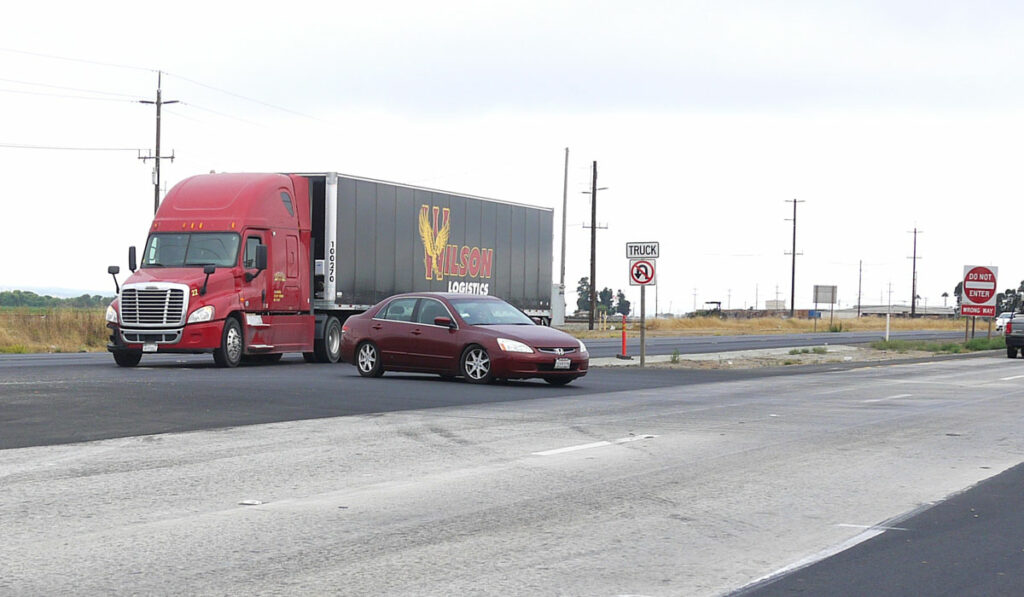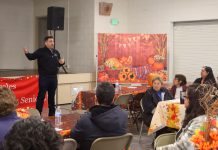
SALINAS VALLEY — Residents of South Monterey County are no strangers to having to travel north to Salinas or beyond for services or activities, and the stretch of Highway 101 between Salinas and Chualar was the topic of last week’s town hall safety discussion.
Monterey County District 3 Supervisor Chris Lopez, Transportation Agency for Monterey County, Caltrans and the South of Salinas US 101 Traffic Safety Alliance invited community members to comment on their ideas for safety issues and improvements through a Zoom meeting July 15.
Opening comments from Lopez mentioned the two recent fatal accidents in the area, one of which happened only days before the meeting.
“We can do better for our community by improving this stretch of highway,” Lopez said. “We’re here tonight to have a conversation about what that looks like. How can we as a community share a unified voice to bring change to this corridor to keep people healthy and safe.”
Lopez said the need is to not only get residents through the corridor, but also maintain commercial traffic to sustain the vital shipping component of the area’s economy and the valley’s role in “feeding the world.”
At the center of most public comments were the mixture of personal vehicles often going above the posted speed limit, with larger and slower-moving commercial and agricultural vehicles, a mixture made more dangerous by the left-hand turns and highway crossings at multiple points on the corridor.
Community members and experts spoke of ideas for improving safety and the possible logistics behind those improvements or the pitfalls of some solutions. One example being an end to all left-hand turns, which would then force commercial vehicles to head north to Salinas or south to Chualar in order to make a turnaround, which would not only be a large inconvenience to commerce, but also clog those two turnaround points.
David Silberberger, a project manager with Caltrans, noted the proximity of the railroad tracks and agricultural supply yards that could complicate the flow and placement of frontage roads.
“It was mentioned here, highway projects move at glacial speed, but railroads move even slower in my experience,” said Norm Groot, executive manager for the Monterey County Farm Bureau.
Groot expressed the importance of having the railroads informed of the process.
“This is the beginning of the process,” said Debbie Hale, TAMC executive director. “It’s going to take longer than we’d all like to actually get something under construction.”
Hale noted the state has offered matching funds for such projects as the corridor improvement. She said with a goal of getting a good concept in place, the community could then move forward with the needed steps, including an environmental review and seeking funds.
Accurate traffic counts are not available for 2020 due to the Covid-19 pandemic affecting traffic rates too deeply. While attendees at the meeting mentioned first-hand and second-hand experience with near misses, they were unable to speak with a verified report.
California Highway Patrol Monterey Area commander, Capt. Kyle Foster spoke about the data from law enforcement’s point of view.
“A majority of our injury and fatal collisions are actually out on State Route 1 and on the west side of the county rather than southern Salinas,” Foster said. “What we continue to see throughout the corridor from the Salinas River bridge to Alisal, is primarily speed continues to be one of the biggest factors of all, then unsafe turns, DUI and unsafe lane changes.”
He said CHP has seen a “significant amount” of hit and runs in the area as well, even while having officers nearby to watch for violations.
The meeting ended with a call for the community to get involved by making comments on an interactive map found at www.us101southofsalinas.com.
“We just need to make sure we’re able to express the concerns we have about this stretch of highway,” Lopez said. “It’s the way that we’re going to make change and I know that it’s so badly needed.”
Suggestions and notes from the online map will be collected and used in an upcoming workshop, possibly taking place in August or September. At that point, attendees will gather to evaluate potential ideas with which to move forward.














